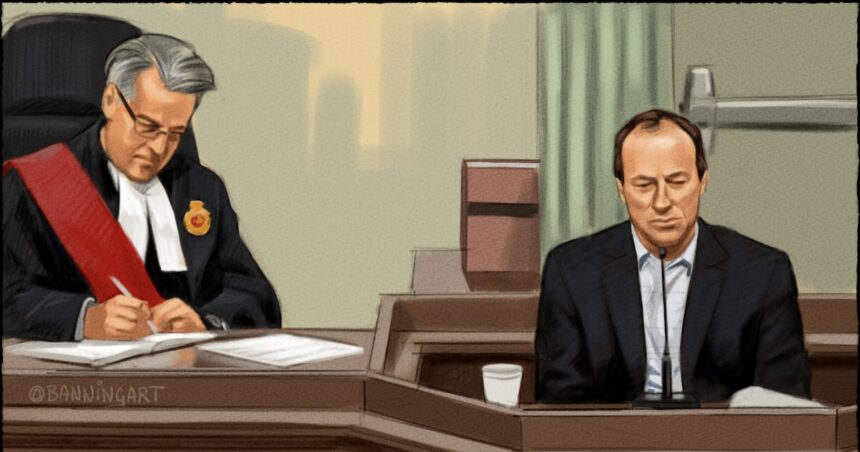In a tense courtroom in Ottawa yesterday, Crown prosecutors delivered their closing arguments in the high-profile trial of David Carroll, the man charged with shooting two Ontario Provincial Police officers in Bourget, Ontario last year. The prosecution emphatically rejected Carroll’s claim of self-defense, arguing he had numerous non-violent alternatives at his disposal.
“The evidence clearly demonstrates that Mr. Carroll had multiple opportunities to de-escalate the situation before resorting to deadly force,” Crown Attorney Melissa Jenkins told the jury. “The officers announced themselves properly, were in full uniform, and followed all protocol during what should have been a routine wellness check.”
The May 2024 shooting sent shockwaves through the small eastern Ontario community when OPP Constables Jamie Wilson and Terrence Murphy were shot while responding to a call at Carroll’s residence. Both officers survived but sustained serious injuries, with Constable Wilson requiring three surgeries and still facing potential permanent mobility limitations.
Court documents revealed that neighbors had called police after hearing what they described as “concerning shouting” from Carroll’s property. When officers arrived, the prosecution contends Carroll fired through his front door without warning.
“These officers were simply doing their job, checking on the welfare of a citizen,” Jenkins continued. “The defendant’s claim that he feared for his life doesn’t align with witness testimony or physical evidence collected at the scene.”
Defense attorney Martin Greenberg has maintained throughout the six-week trial that his client was suffering from paranoid delusions and believed intruders were attempting to break into his home. The defense called several witnesses who testified to Carroll’s deteriorating mental health in the months before the incident.
“My client was in a state of extreme fear and confusion,” Greenberg stated in his closing arguments Monday. “He had stopped taking his prescribed medication three months prior and was experiencing auditory hallucinations. This isn’t about avoiding responsibility—it’s about understanding the context of his actions.”
However, the prosecution presented evidence that Carroll had been involved in an altercation with local law enforcement just two weeks before the shooting, suggesting a pattern of hostility toward police rather than confusion about their identity.
The case has drawn significant attention across Canada as it intersects with ongoing national conversations about police procedures during wellness checks and the handling of individuals experiencing mental health crises.
Mental health expert Dr. Sandra Reeves, who testified for the prosecution, explained that even individuals experiencing paranoia typically retain the ability to identify uniformed police officers and respond to clear verbal commands, which were captured on the officers’ body cameras.
“The bodycam footage does not support the defense’s narrative,” Jenkins told the jury. “The officers clearly identified themselves multiple times. Mr. Carroll had options—he could have spoken through the door, called 911 to verify their identity, or simply observed them through a window before taking irreversible action.”
The trial has been closely followed by law enforcement agencies across the country, with the Ontario Provincial Police Association releasing a statement emphasizing the dangers officers face during routine calls.
“Every day, our members put themselves at risk to ensure public safety,” said Association President Mark Sullivan. “This case highlights the unpredictable nature of police work and the split-second decisions officers must make in potentially volatile situations.”
Judge Helena Branson is expected to deliver her instructions to the jury tomorrow, with deliberations likely beginning by Wednesday. If convicted on all counts, Carroll faces up to 25 years in prison.
As this landmark case nears its conclusion, Canadians are left to wrestle with difficult questions about the balance between public safety, police procedures, and mental health interventions. When the system identifies individuals in crisis, how can we ensure appropriate responses that protect both the public and those suffering from mental illness?










